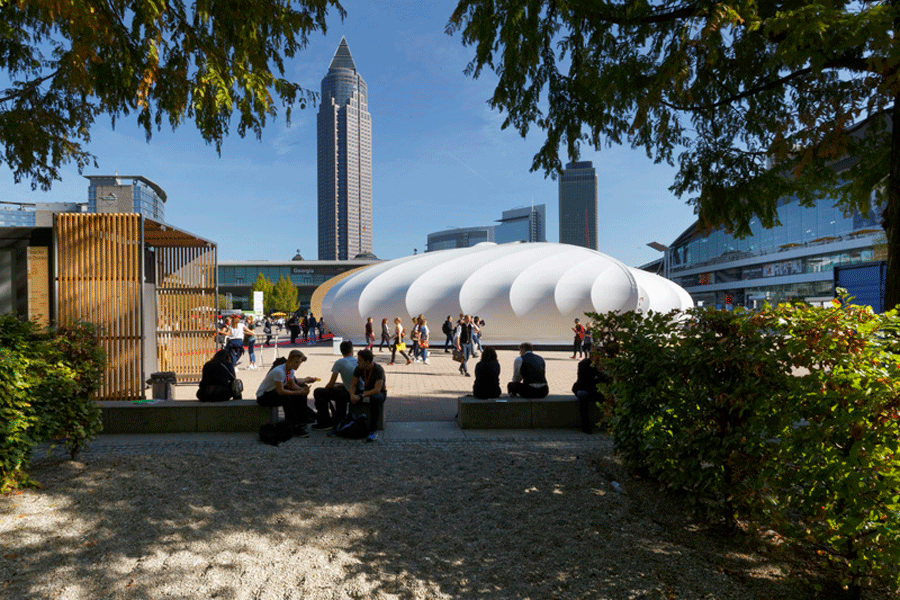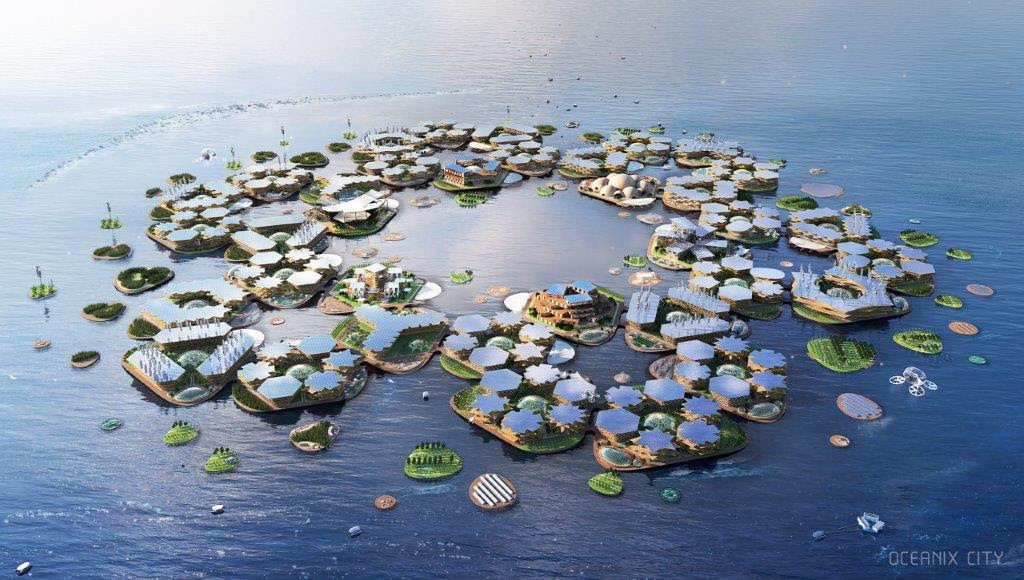
The following description is courtesy of BIG and Partners.
As part of UN-Habitat’s New Urban Agenda, floating cities non-profit
The first UN high-level roundtable on Sustainable Floating Cities brought together innovators, explorers, marine engineers and scientists at the UN Headquarters to share ideas and solutions to the threats faced by coastal cities and countries due to rising sea levels. The roundtable was co-convened by
“We are the UN agency mandated to work with cities, be they on land or water. We are ready to engage in dialogue on Sustainable Floating Cities to ensure this burgeoning sector is mobilized to good effect and for the benefit of all people.” Maimunah Mohd Sharif, the Executive Director of UN-Habitat and UN
By 2050, 90% of the world’s largest cities will be exposed to rising seas. The vast majority of coastal cities will be impacted by coastal erosion and flooding, displacing millions of people, while destroying homes and infrastructure. Marc Collins Chen, Co-Founder
Designed as a man-made ecosystem, Oceanix City is anchored in the UN Sustainable Development Goals, channeling flows of energy, water, food

“9 out of 10 of the world’s largest cities will be exposed to rising seas by 2050. The sea is our fate – it may also be our future. The first sustainable and self-sustained floating community
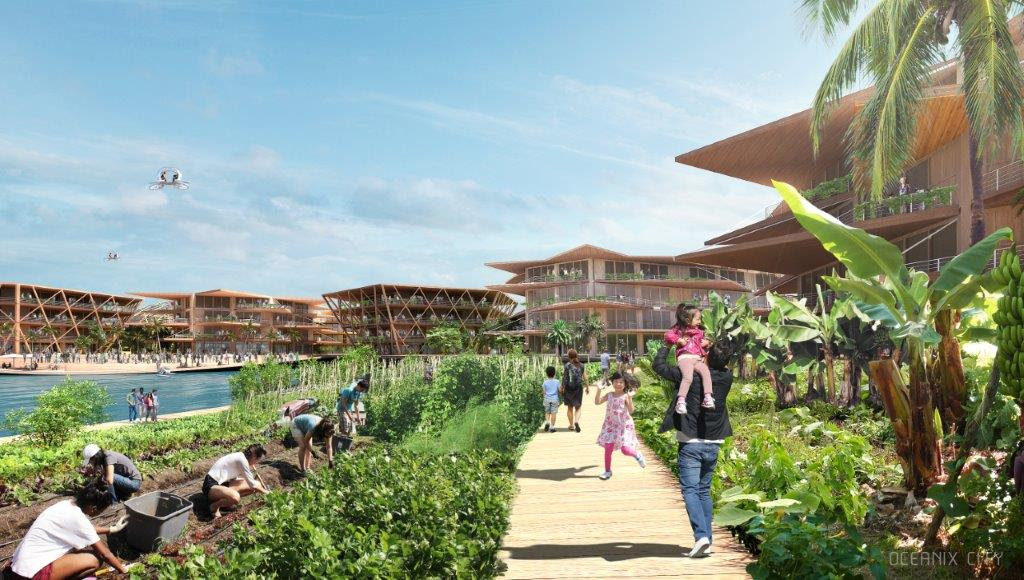
Oceanix City is designed to grow, transform and adapt organically over time, evolving from neighborhoods to cities with the possibility of scaling indefinitely. Modular neighborhoods of 2 hectares create thriving self-sustaining communities of up to 300 residents with mixed-use space for living, working and gathering during day and night time. All built structures in the neighborhood are kept below 7 stories to create a low center of gravity and resist wind. Every building fans out to self-shade internal spaces and public realm, providing comfort and lower cooling costs while maximizing roof area for solar capture.
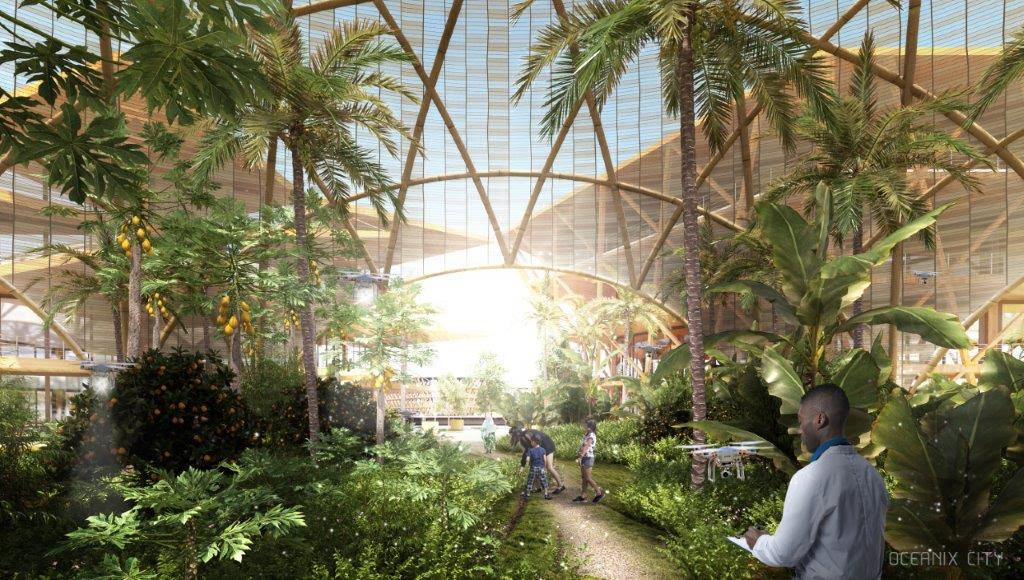
Communal farming is the heart of every platform, allowing residents to embrace sharing culture and zero waste systems. Below sea level, beneath the platforms,
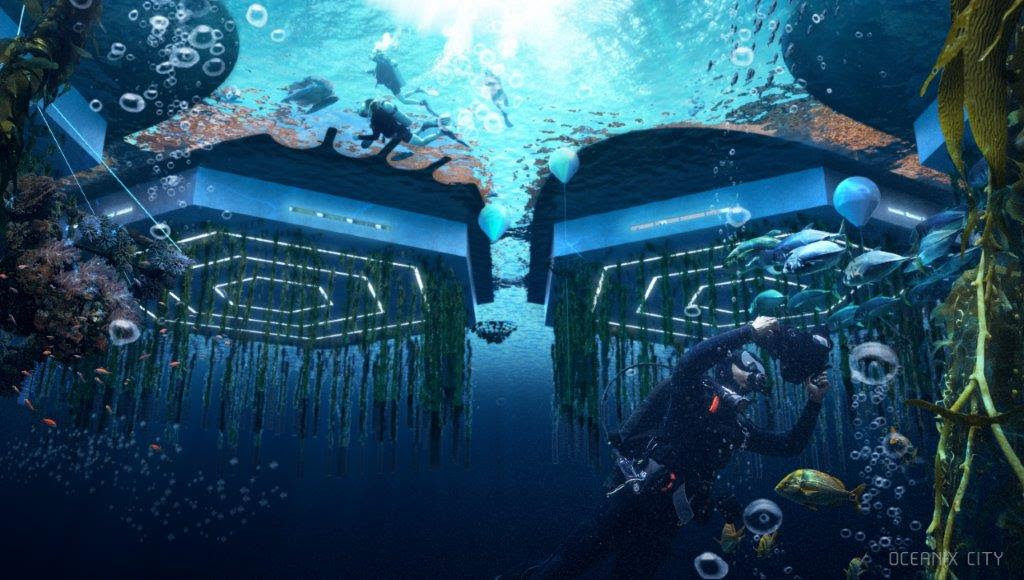
By clustering six neighborhoods around a protected central harbor, larger villages of 12 hectares can accommodate up to 1,650 residents. Social, recreational and commercial functions are placed around the sheltered inner ring to encourage citizens to gather and move around the village. Residents can easily walk or boat through the city using electric vehicles.
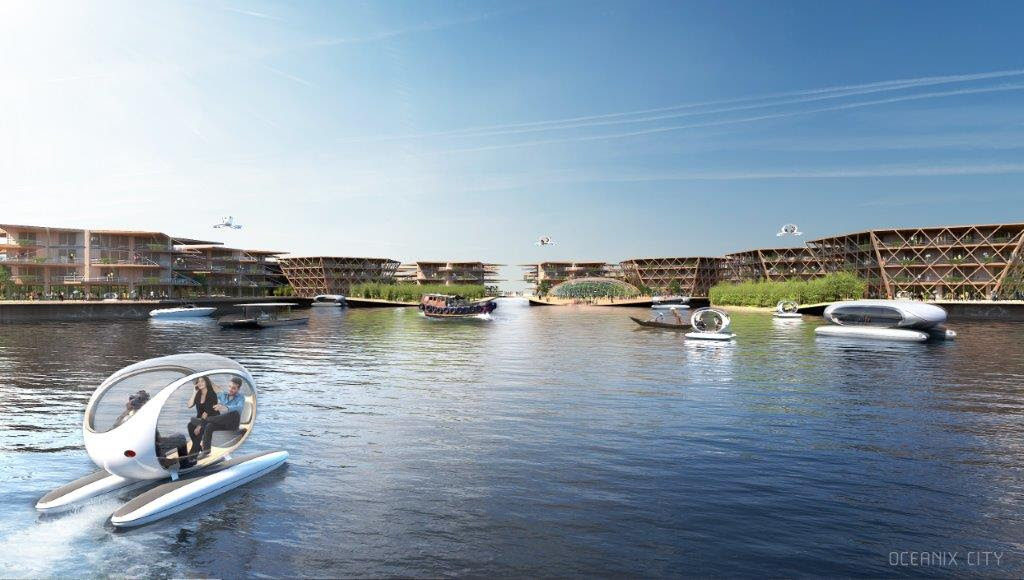
Aggregating to reach a critical density, six villages connect to form a city of 10,000 residents with a strong sense of community and identity. A larger protected harbor is formed in the heart of the city. Floating destinations and art, including six specialized landmark neighborhoods with a public square, market place and centers for spirituality, learning, health, sport
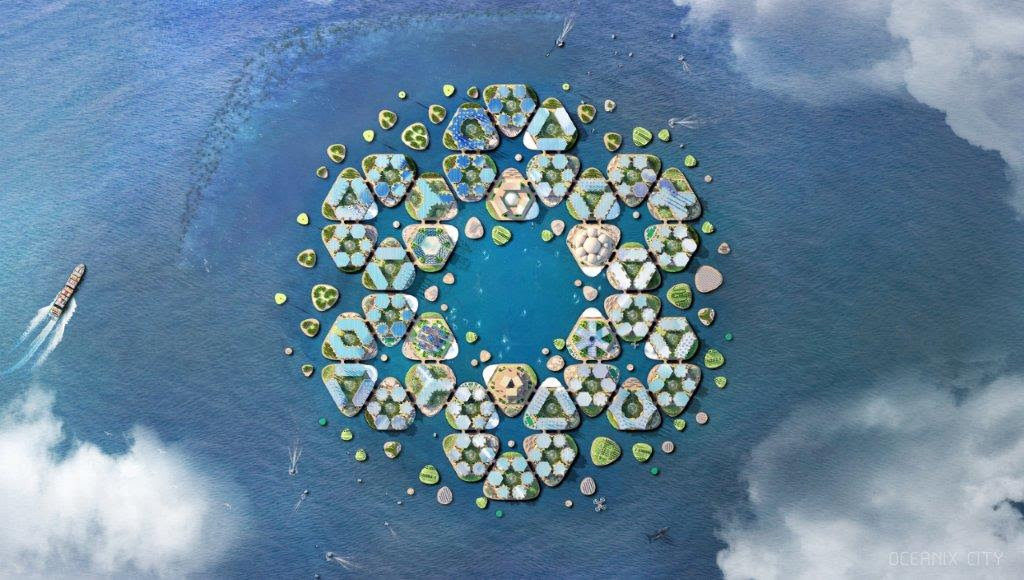
Floating cities can be prefabricated
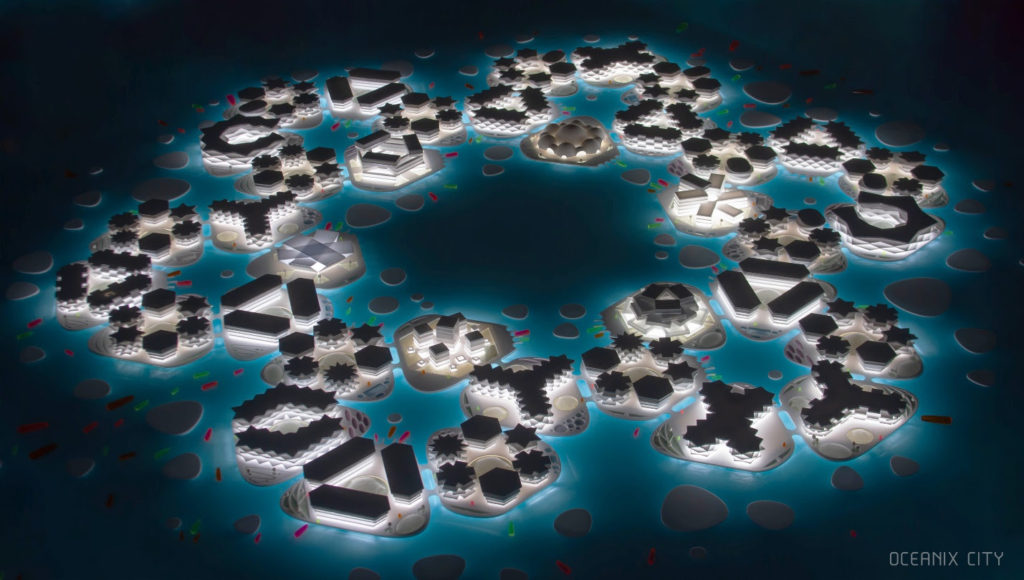
Oceanix City Facts
Client: OCEANIX
Size: 75 hectares
Collaborators: MIT Center for Ocean Engineering, Mobility in Chain, Sherwood Design Engineers, Center for Zero Waste Design, Transsolar KlimaEngineering, Global Coral Reef Alliance, Studio Other Spaces (Olafur Eliasson and Sebastian Behmann), Dickson Despommier
BIG–BJARKE INGELS GROUP
Partners-in-Charge: Bjarke Ingels, Daniel Sundlin
Project Leaders: Alana Goldweit, Jeremy Alain Siegel
Team: Andy Coward, Ashton Stare, Autumn Visconti, Bernardo Schuhmacher, Carlos Castillo, Cristina Medina-Gonzalez, Jacob Karasik, Kristoffer Negendahl, Mai Lee, Manon Otto, Terrence Chew, Thomas McMurtrie, Tore Banke, Tracy Sodder, Walid Bhatt, Will Campion, Yushan Huang, Tore Banke, Ziyu Guo


